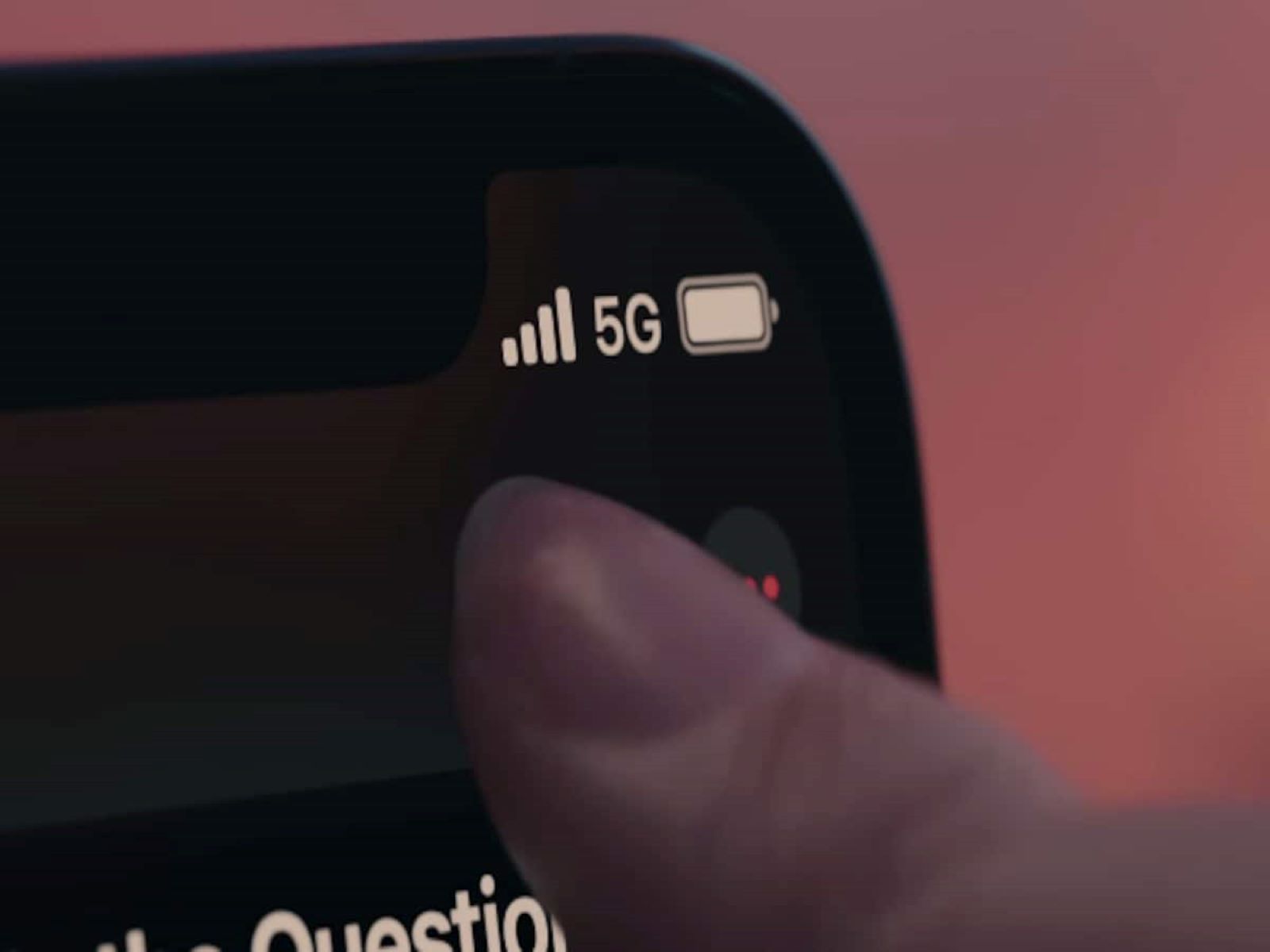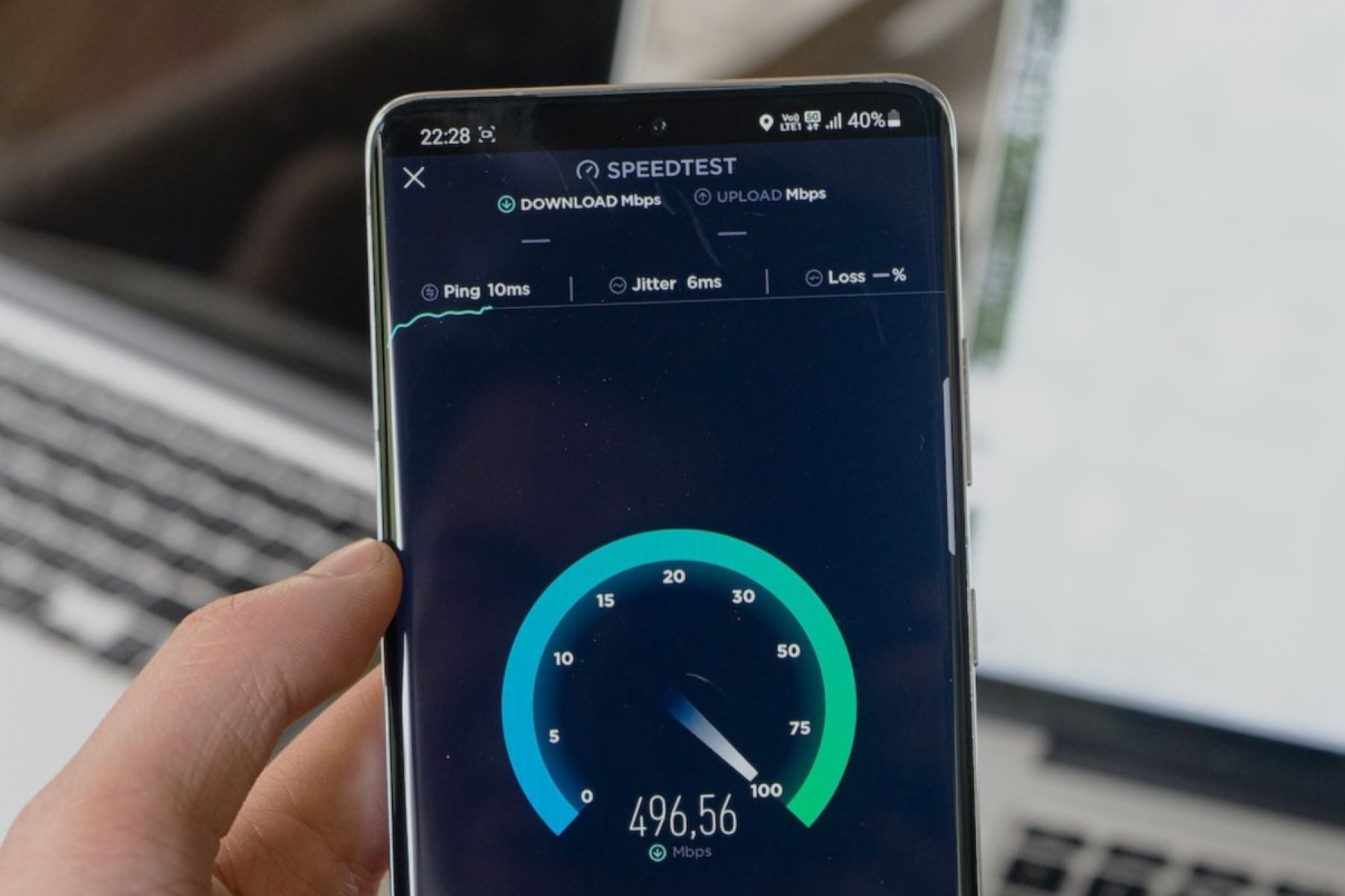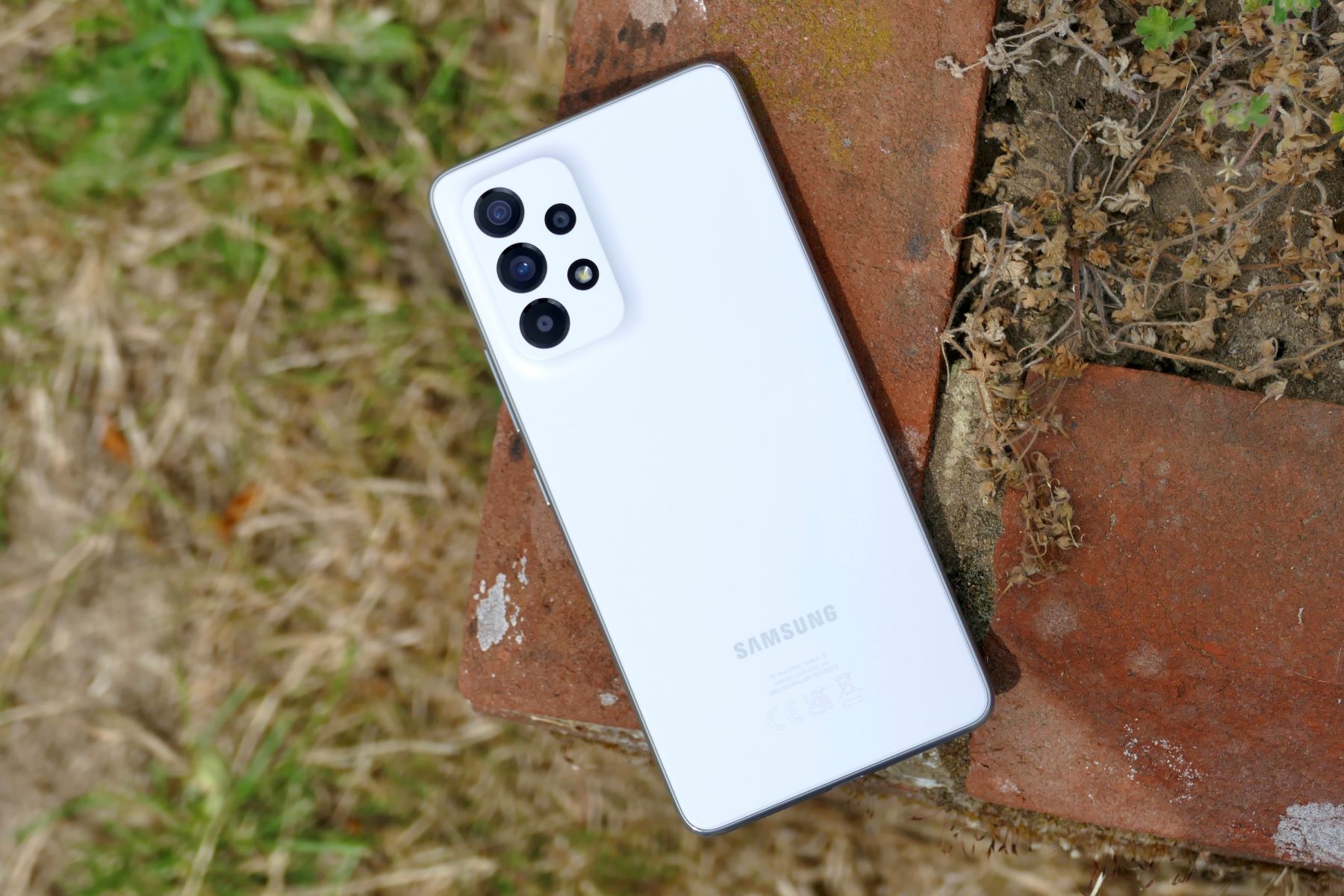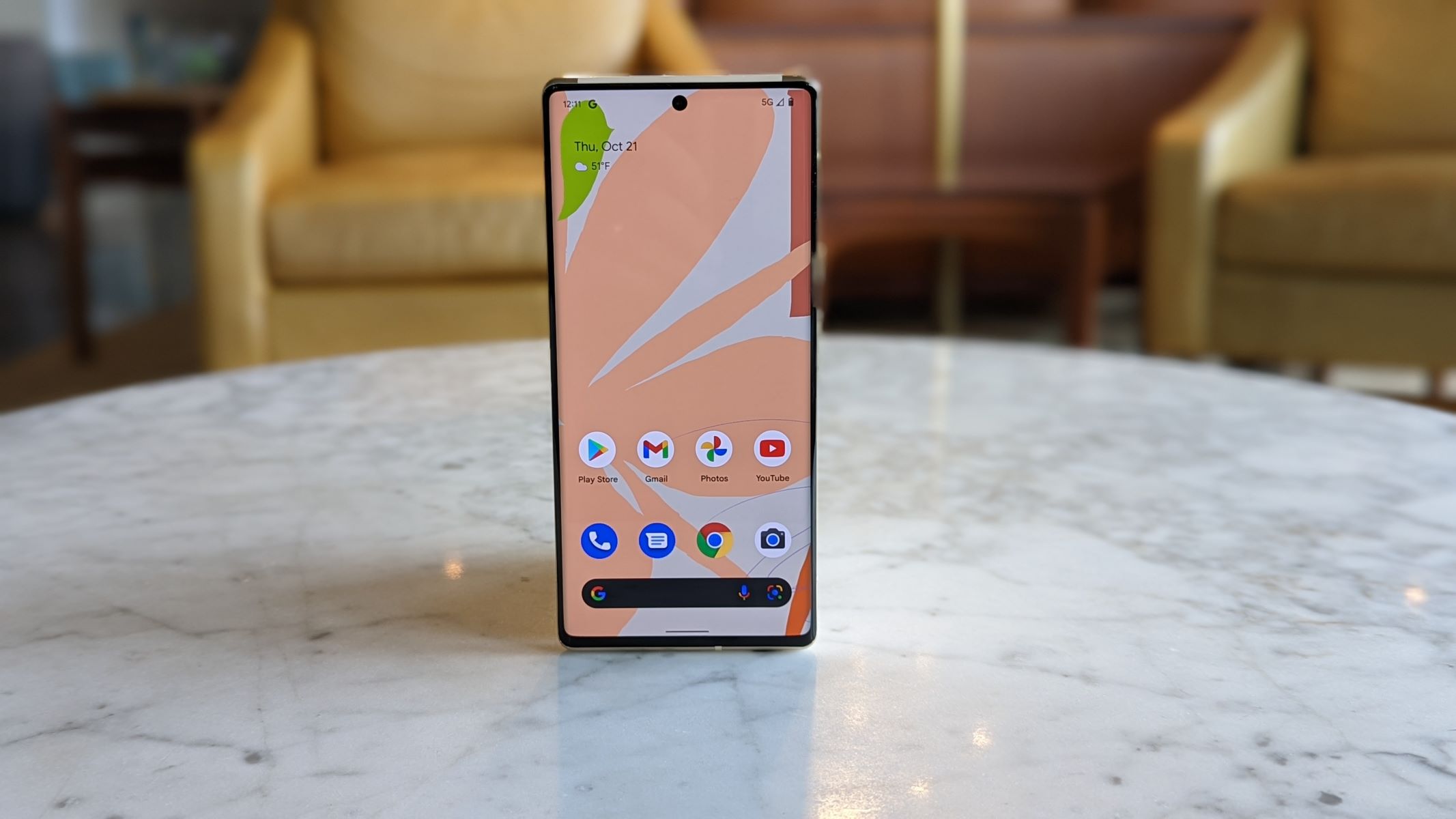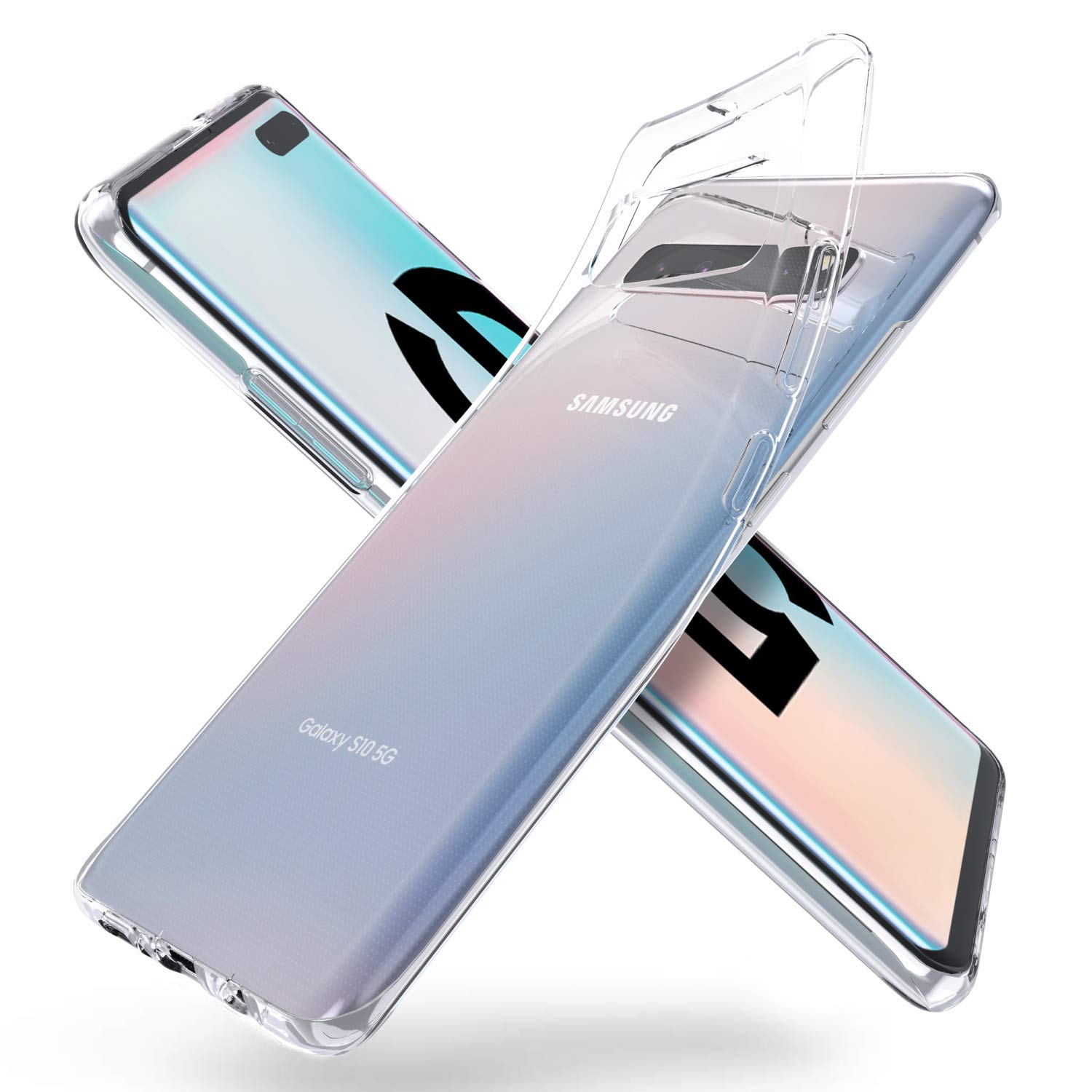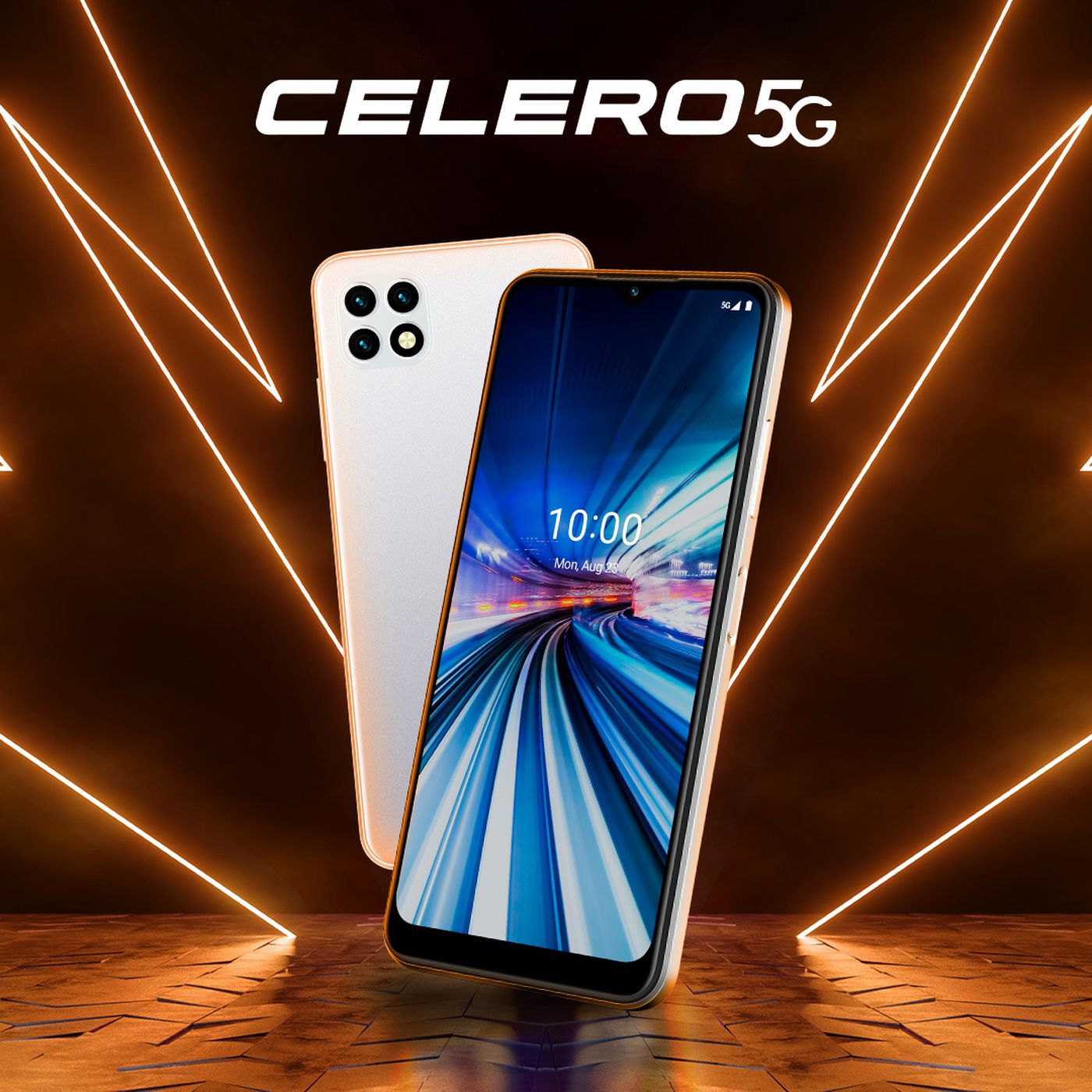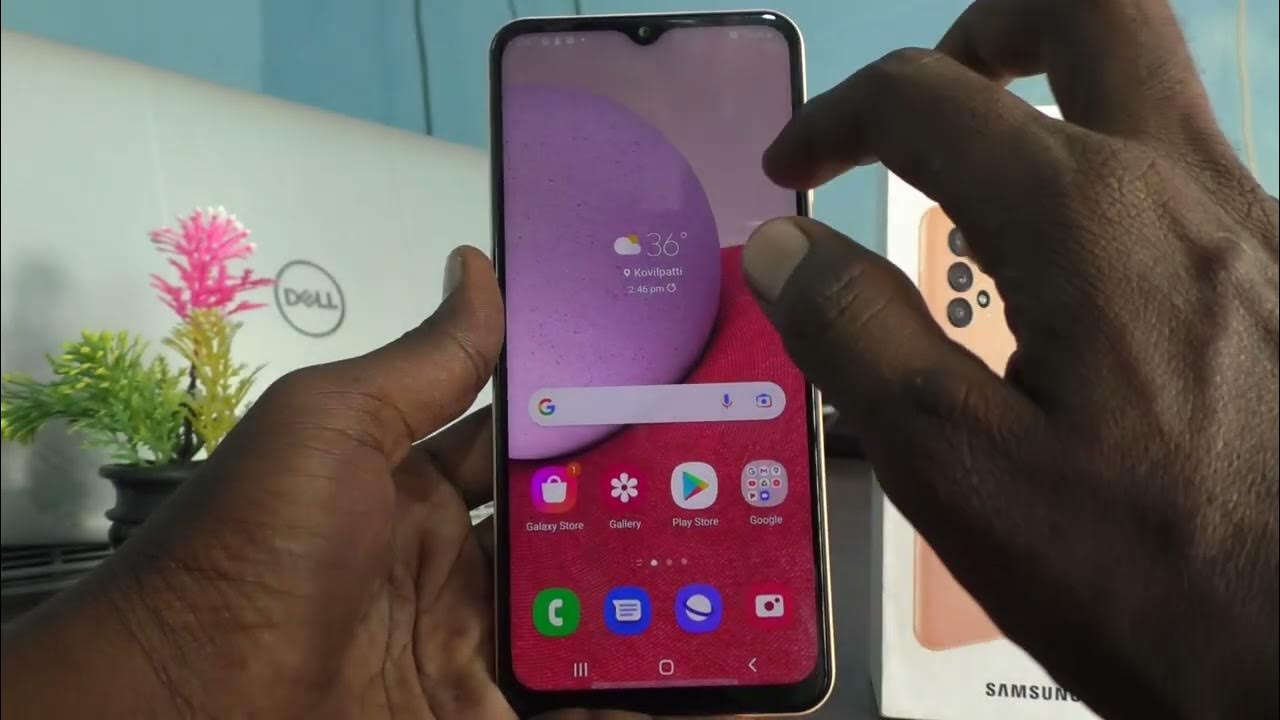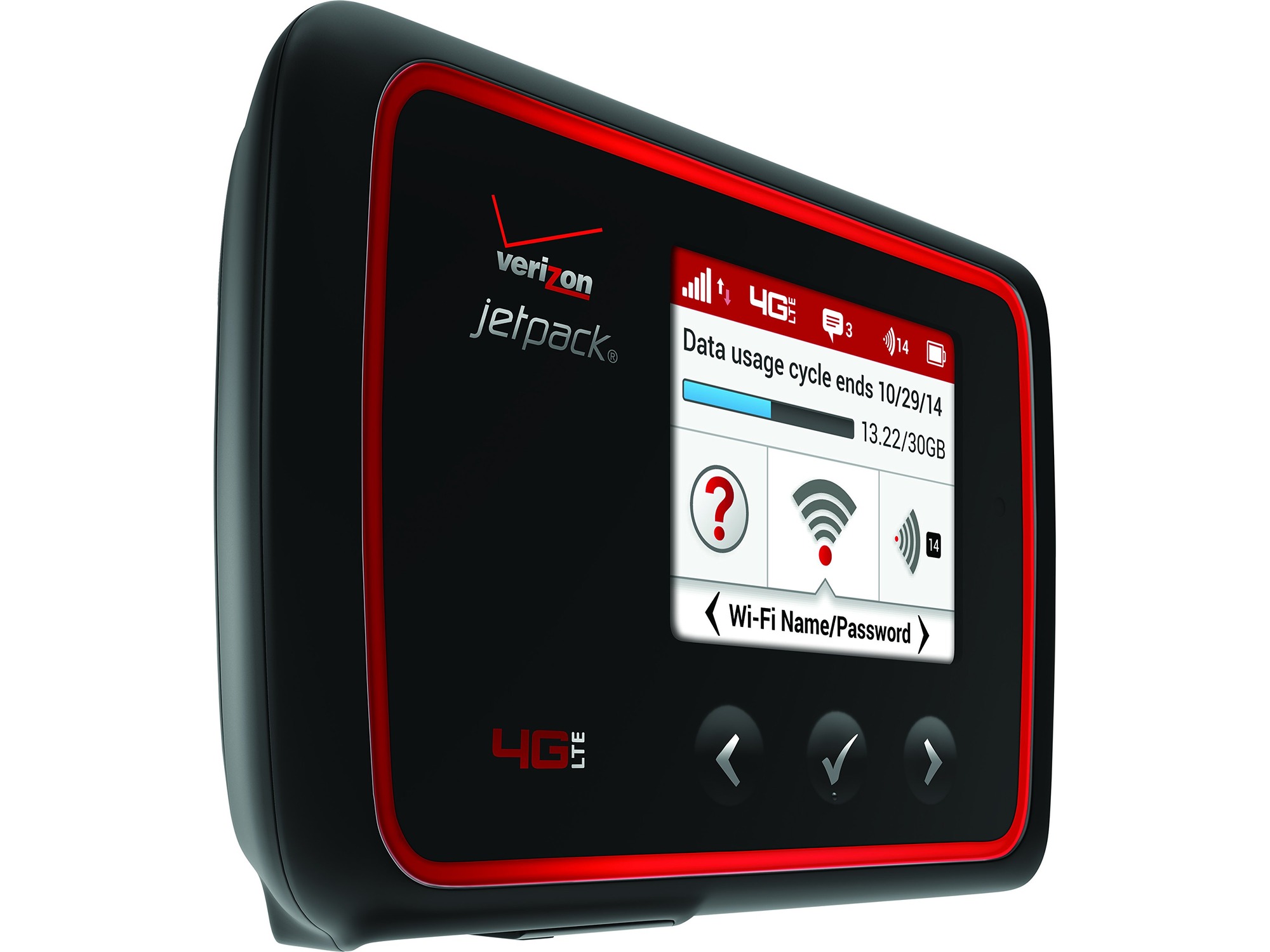Introduction
Welcome to the future of mobile connectivity! 5G, or fifth-generation wireless technology, is revolutionizing the way we communicate and connect with the world around us. With lightning-fast speeds, ultra-low latency, and massive data capacity, 5G offers an unparalleled mobile experience that promises to transform the way we live, work, and play.
Whether you’re streaming high-definition videos, gaming in real-time, or accessing cloud-based applications, 5G technology ensures smoother, more seamless experiences like never before. But before you can enjoy the benefits of 5G on your phone, it’s essential to check if your device is compatible and take the necessary steps to upgrade if needed. In this guide, we’ll walk you through everything you need to know to get 5G up and running on your phone.
But first, let’s delve into what exactly 5G is and why it’s such a game-changer. 5G is the next generation of wireless technology, designed to deliver faster speeds, lower latency, and more reliable connections than its predecessors. It operates on higher frequency bands and utilizes advanced technologies like beamforming and massive MIMO (Multiple-Input Multiple-Output), enabling faster data transfer and reducing network congestion.
One of the crucial benefits of 5G is its incredible speed. With download speeds potentially reaching up to 10 gigabits per second (Gbps), you’ll be able to download large files, stream high-definition videos, and engage in bandwidth-intensive activities without any lag or buffering.
Besides speed, 5G also brings significantly lower latency, which is the time it takes for data to travel between devices and the network. This means you can enjoy real-time gaming, video conferencing, and other applications that require instant responsiveness.
Another advantage of 5G is its ability to handle a massive number of connected devices simultaneously. With the Internet of Things (IoT) becoming increasingly prevalent, where everyday objects are equipped with internet connectivity, 5G ensures a seamless and reliable connection for a multitude of devices in smart homes, cities, and industries.
Now that you have an understanding of what 5G is and its potential, it’s time to determine if your current phone is 5G compatible.
What is 5G?
5G stands for fifth-generation wireless technology, the latest advancement in mobile network connectivity. Building upon the previous generations of wireless technology, 5G offers faster speeds, lower latency, and improved reliability, opening up a world of possibilities for consumers and businesses alike.
One of the key features of 5G is its incredible speed. With download speeds potentially reaching up to 10 gigabits per second (Gbps), 5G is significantly faster than its predecessor, 4G. This means that you can download large files, stream high-definition videos, and enjoy bandwidth-intensive applications with ease and without any noticeable lag or buffering.
Another essential aspect of 5G is its significantly lower latency. Latency refers to the time it takes for data to travel between devices and the network. With 5G, latency can be reduced to as little as 1 millisecond, enabling real-time responsiveness for applications that require instant interaction, such as online gaming, virtual reality, and remote surgery.
5G also boasts improved network capacity, allowing for a massive number of devices to be connected simultaneously. This is particularly crucial in an era where the number of smart devices continues to grow, from smartphones and tablets to smart TVs, wearable devices, and even connected cars. With 5G, multiple devices can connect to the network seamlessly, without experiencing a significant drop in performance or bandwidth.
One of the notable technologies that empowers 5G is beamforming. Beamforming allows the network to focus its signal directly towards the connected devices, rather than broadcasting it in all directions. By directing the signal where it is needed, beamforming enhances signal strength and reception, resulting in better overall performance and coverage.
Massive MIMO (Multiple-Input Multiple-Output) is another technology that contributes to the capabilities of 5G. With Massive MIMO, multiple antennas are used to transmit and receive data simultaneously, improving both capacity and spectral efficiency. By harnessing the power of multiple antennas, 5G networks can handle a larger number of connections and deliver faster download and upload speeds.
Overall, 5G is set to transform the way we connect, communicate, and experience the digital world. From faster download speeds to real-time responsiveness and increased device connectivity, 5G opens up a whole new realm of possibilities, enabling innovations in areas such as autonomous vehicles, remote robotics, smart cities, and augmented reality.
In the next section, we will explore how to check if your current phone is 5G compatible and the steps you can take to upgrade if needed.
Is my phone 5G compatible?
If you’re eager to experience the blazing-fast speeds and improved performance of 5G, the first step is to determine if your current phone is 5G compatible. Not all devices support this new technology, so it’s essential to check if your phone meets the necessary requirements.
The simplest way to find out if your phone is 5G compatible is to check its specifications. Most manufacturers and mobile carriers provide detailed information about the supported network technologies on their websites or in the user manual of the phone. Look for terms such as “5G,” “5G NR” (New Radio), “mmWave,” or “sub-6 GHz” to indicate compatibility with 5G networks.
Keep in mind that 5G compatibility is a relatively new feature, so older phone models may not support this technology. If you have a phone that was released before 2019, the chances are that it does not support 5G. However, it’s always worthwhile to double-check the specifications or contact the manufacturer for confirmation.
Additionally, it’s important to note that even if your phone supports 5G, it may not be able to utilize all the features of the network. Different generations of 5G exist, including low-band (sub-6 GHz), mid-band, and high-band (mmWave) frequencies. Depending on your location and the network infrastructure in your area, your phone may support only certain 5G frequency bands.
To verify the 5G compatibility of your phone, you can also consult your mobile service provider. They can provide information about the specific models and compatibility requirements for their 5G network. Reach out to their customer support or visit their website for more details.
If you find that your current phone is not 5G compatible, don’t worry! There are several options available to upgrade your device and join the 5G revolution. The most straightforward option is to purchase a new phone that supports 5G. Nowadays, many manufacturers offer a wide range of 5G-enabled devices across various price points, ensuring that there’s an option that fits your needs and budget.
If you’re not ready to invest in a new phone, another alternative is to consider purchasing a 5G-compatible modem or hotspot device. These external devices can connect to the 5G network and provide internet access to your non-5G phone through Wi-Fi tethering.
In the next section, we will explore how to check your phone’s settings to verify its 5G compatibility and discuss the steps you can take to upgrade to 5G if needed.
Check your phone’s settings
If you’re unsure whether your phone has 5G capability, you can simply check its settings to verify. Most smartphones provide an easy way to identify the network technologies supported by the device.
To check your phone’s settings, follow these steps:
- Go to the “Settings” menu on your phone. This is typically represented by a gear icon and can be found on your home screen or in the app drawer.
- Scroll down and look for an option such as “Network & Internet,” “Connections,” or “Cellular & SIM.” The exact name may vary depending on your device and operating system.
- Tap on the network settings option, and you should see a list of available network types, including 5G, 4G LTE, 3G, and 2G.
If you see “5G” or “5G NR” among the network types listed, congratulations! Your phone supports 5G. You’re all set to enjoy the benefits of this faster and more responsive technology.
On the other hand, if you don’t see “5G” or “5G NR” listed, it means that your phone does not have 5G compatibility. However, there’s no need to worry. You still have options to upgrade your phone or find alternative ways to experience 5G connectivity.
It’s important to note that even if your phone supports 5G, your location and network coverage play a significant role in your ability to connect to a 5G network. 5G infrastructure is still being rolled out in many parts of the world, so it’s possible that you may not have access to a 5G connection in your area yet. Keep an eye out for updates from your mobile service provider regarding the availability of 5G networks in your region.
In the next section, we will explore how to upgrade your phone to 5G, whether it’s through purchasing a new device or utilizing external devices for 5G connectivity.
How to upgrade your phone to 5G
If your current phone doesn’t have 5G compatibility, don’t worry! There are several options available to upgrade your device and enjoy the benefits of 5G technology.
1. Purchase a new 5G-enabled phone: The most straightforward option is to invest in a new phone that supports 5G. There are numerous models available from various manufacturers, catering to different budgets and preferences. Look for phones that specifically mention 5G compatibility in their specifications. It’s a great opportunity to upgrade your device and experience the full capabilities of 5G.
2. Check with your mobile service provider: Some mobile carriers offer trade-in programs or discounted rates on 5G-enabled phones for existing customers. Reach out to your service provider to inquire about any special offers or upgrade options they may have. They can guide you through the process and provide you with detailed information about compatible devices and pricing plans.
3. Utilize 5G-compatible external devices: If purchasing a new phone is not an immediate option, you can consider using external devices to connect to 5G networks. 5G-compatible modems or hotspot devices allow you to connect to the 5G network and share the internet connection with your non-5G phone through Wi-Fi tethering. This way, you can still experience the benefits of 5G connectivity on your existing device without the need for an upgrade.
4. Keep an eye on software updates: In some cases, phone manufacturers release software updates that enable 5G compatibility on certain models. Check for software updates on your phone regularly, as it’s possible that a future update may bring 5G support to your device. However, not all phones can be updated to support 5G, so it’s essential to verify compatibility with the manufacturer or service provider.
Remember to research and consider your options carefully before making a decision. Assess your needs, budget, and the availability of 5G networks in your area to determine the best course of action.
Once you have upgraded your phone to a 5G-compatible device, you’re ready to enjoy the blazing-fast speeds, low latency, and enhanced performance that 5G has to offer. The next section will guide you on how to contact your service provider to activate 5G on your phone and explore suitable 5G plans and pricing.
Contact your service provider
Now that you have a 5G-compatible phone, it’s time to contact your mobile service provider to activate 5G on your device and explore the available plans and pricing options.
Here are the steps you can follow:
1. Call customer service: Reach out to your service provider’s customer service hotline to inquire about activating 5G on your phone. They can guide you through the process and provide you with the necessary information and instructions.
2. Visit the service provider’s website: Most service providers have a dedicated section on their website that provides details about 5G coverage, plans, and device compatibility. Browse through the website to find relevant information and contact details.
3. Live chat or email: Some service providers offer live chat support or have an email contact option. Utilize these channels to ask questions and seek assistance regarding 5G activation and plan options.
During your conversation with the service provider, make sure to inquire about the coverage area for 5G networks. It’s essential to understand the availability of 5G in your location to ensure a seamless experience. Ask about the network quality, expected speeds, and any limitations or restrictions that may apply.
Take this opportunity to discuss the different 5G plans and pricing options available. Service providers often offer specific plans tailored for 5G, which may include higher data limits or exclusive benefits. Compare the plans to find the one that suits your needs and budget.
Inquire about any special promotions, discounts, or bundle options that may be available for 5G customers. You might be eligible for additional benefits or cost savings when signing up for a 5G plan.
Remember to clarify any terms and conditions associated with the 5G plans. Pay attention to factors such as contract length, early termination fees, and any additional fees or charges that may apply.
Once you have selected a plan and activated 5G on your phone, you’re ready to experience the advantages of 5G technology. Enjoy the lightning-fast speeds, low latency, and improved performance in your everyday mobile activities.
In the next section, we will discuss how to test your 5G connection to ensure everything is working correctly and troubleshoot any common issues that may arise.
Understanding 5G plans and pricing
As you delve into the world of 5G, it’s important to have a clear understanding of the different plans and pricing options available from your mobile service provider. The right plan will not only give you access to the exciting capabilities of 5G but also cater to your specific needs and budget.
Here are some key factors to consider when evaluating 5G plans:
1. Data allotment: Consider your data usage habits and choose a plan that provides an adequate data allowance. Streaming high-definition videos, gaming, and downloading large files can consume significant data, so ensure that the plan offers sufficient data to support your usage.
2. Speed tiers: Some service providers offer different speed tiers for their 5G plans. Higher-tier plans may provide faster download and upload speeds, which can enhance your overall 5G experience. Evaluate your needs and budget to determine the appropriate speed tier for your usage.
3. Unlimited plans: If you’re a heavy data user or prefer not to worry about data limits, consider opting for an unlimited data plan. These plans allow you to use as much data as you need without incurring additional charges. However, keep in mind that there may be deprioritization thresholds or speed throttling after a certain amount of usage.
4. Bundled services: Some service providers offer bundle options that include additional services such as streaming subscriptions, cloud storage, or device protection plans. Assess the value and relevance of these additional services to determine if a bundled plan is suitable for you.
5. Contract length: Consider whether you prefer a contract-based plan with a specific duration or a more flexible month-to-month plan. Contract-based plans often come with device subsidies or discounts, while month-to-month plans provide greater flexibility but may require you to purchase the phone at full price.
6. International roaming: If you frequently travel abroad, inquire about international roaming options for 5G. Confirm whether your service provider offers 5G roaming in the countries you visit and the associated costs.
7. Costs and fees: In addition to the monthly plan cost, be aware of any additional fees or charges that may apply. These can include activation fees, device installment fees, or early termination fees. Carefully review the terms and conditions to understand the full cost of the plan.
It’s a good practice to compare the plans and pricing offered by different service providers to ensure you’re getting the best value for your money. Consider factors such as network coverage, reputation, and customer service quality when making your decision.
Remember to regularly review your plan and evaluate your usage to ensure it continues to meet your needs. As technology evolves and your usage patterns change, you may need to adjust your plan or explore other options to optimize your 5G experience.
In the next section, we will discuss how to test your 5G connection to ensure it’s working correctly and troubleshoot common issues that you may encounter.
Testing your 5G connection
After activating 5G on your phone and selecting a suitable plan, it’s important to test your 5G connection to ensure everything is working correctly. Testing allows you to verify the speed, latency, and overall performance of your 5G network. Here are some steps to help you test your 5G connection:
1. Check signal strength: Start by checking the signal strength of your 5G network. Go to the settings of your phone and locate the signal strength indicator. Ideally, you should have a strong signal to experience the best 5G performance. If the signal is weak or non-existent, try moving to a different location or contacting your service provider for assistance.
2. Run a speed test: Speed tests provide valuable information about your network’s download and upload speeds. There are several free online speed test tools available that you can use. Simply open a web browser on your phone and search for “5G speed test.” Follow the instructions on the website to initiate the test and wait for the results. This will give you an idea of how fast your 5G connection is performing.
3. Measure latency: Latency refers to the delay between requesting data and receiving a response. A lower latency is desirable for real-time applications like gaming or video conferencing. Some speed test tools also provide latency measurements alongside speed results. Aim for a latency below 20 milliseconds (ms) for optimal performance.
4. Compare results: Compare the results of your 5G speed test with the expected speeds advertised by your service provider. If the speeds fall significantly below the advertised rates, consider contacting your service provider to address any potential issues or improve your network connection.
5. Test different locations: If you have access to multiple 5G coverage areas, test your connection in different locations. This will help you assess the consistency and reliability of your 5G network performance. Note any variations in signal strength, speeds, or latency and consider adjusting your usage patterns accordingly.
It’s important to keep in mind that the speeds and performance you experience may vary based on various factors, including network congestion, distance from the cell tower, or even the specific device you’re using. By performing regular tests, you can monitor your 5G connection and address any connectivity issues promptly.
If you encounter persistent issues or are not satisfied with the performance of your 5G connection, contact your service provider’s customer support for assistance. They can troubleshoot and offer solutions or suggest optimizations specific to your situation.
In the next section, we will cover common 5G issues that you may encounter and provide troubleshooting tips to resolve them.
Troubleshooting common 5G issues
While 5G technology offers numerous benefits, it’s not immune to occasional issues. If you encounter any problems with your 5G connection, here are some common issues and troubleshooting steps to help resolve them:
1. Weak or unstable signal: If you experience a weak or unstable signal, try moving to a different location. Signal strength can vary depending on your proximity to the cell tower and any obstructions in the environment. If the problem persists, contact your service provider to inquire about potential network or coverage issues in your area.
2. Slow speeds: If your 5G connection is consistently slow, there are several potential causes to consider. First, check if you have reached your data limit for the billing period. If not, restart your device as it can help refresh the connection. Additionally, check for any background apps or processes consuming excessive data or bandwidth and close or disable them. If the issue continues, contact your service provider to investigate and resolve any potential network congestion or technical problems.
3. High latency: Latency refers to the delay in data transmission and can impact real-time applications. If you experience high latency, ensure that your 5G plan includes low-latency features. If it does and the latency remains high, try restarting your device to refresh the connection. Additionally, consider connecting to a different Wi-Fi network or contacting your service provider to address any latency-related issues.
4. Inconsistent connectivity: If your 5G connection frequently drops or is inconsistent, start by restarting your device to reset the network settings. Ensure that your phone’s software is up to date, as outdated software can sometimes cause connectivity issues. If the problem persists, contact your service provider to investigate and resolve any network-related problems that may be affecting your connection.
5. Device compatibility issues: If you recently upgraded to a new phone with 5G support and are experiencing issues, ensure that your device is running the latest software update. In some cases, updating the device’s firmware can resolve compatibility issues. If not, contact your device manufacturer or service provider for further assistance.
6. Battery drain: 5G connectivity can consume more power than previous network technologies, potentially leading to increased battery drain. To optimize battery life, adjust your device’s settings to optimize power consumption. This can include reducing the screen brightness, disabling unused apps or features, and enabling battery-saving modes. If the battery drain is significant and continues to be a problem, consider contacting your device manufacturer or service provider for additional guidance or battery-saving tips specific to your device.
If none of the troubleshooting steps resolve your 5G issues, it’s advisable to reach out to your service provider’s customer support for further assistance. They have the expertise to analyze and troubleshoot specific network and device-related problems.
By tackling common 5G issues promptly and seeking assistance when needed, you can ensure a smooth and enjoyable 5G experience on your phone.
Conclusion
5G technology is revolutionizing the way we connect and experience the digital world. With faster speeds, lower latency, and improved network capacity, 5G offers unprecedented opportunities for mobile connectivity. Whether you’re streaming high-definition videos, participating in real-time gaming, or utilizing cutting-edge applications, 5G enhances your mobile experience like never before.
In this guide, we have covered the essential aspects of getting 5G on your phone. We discussed what 5G is and its transformative capabilities, checked how to determine if your phone is 5G compatible, explored various options to upgrade to 5G, and emphasized the importance of contacting your service provider to activate 5G and explore suitable plans and pricing.
We also emphasized the significance of testing your 5G connection to ensure optimal performance and provided troubleshooting tips for common 5G issues you may encounter. By following these steps and seeking assistance when needed, you can fully enjoy the benefits of 5G technology.
Remember that 5G is continually evolving, with network infrastructure expanding and devices becoming more advanced. Stay updated with the latest developments in 5G technology, as new features, applications, and services are introduced regularly.
As you embark on your 5G journey, consider the unique opportunities it presents. From the rise of smart cities and autonomous vehicles to the remote connectivity of industries and the advancements in healthcare, 5G holds immense potential to transform various aspects of our lives.
Whether you’re a business professional, a student, or simply someone who values fast and reliable connectivity, 5G opens up a vast array of possibilities. Embrace the future of mobile technology and join the growing community that is harnessing the power of 5G.







